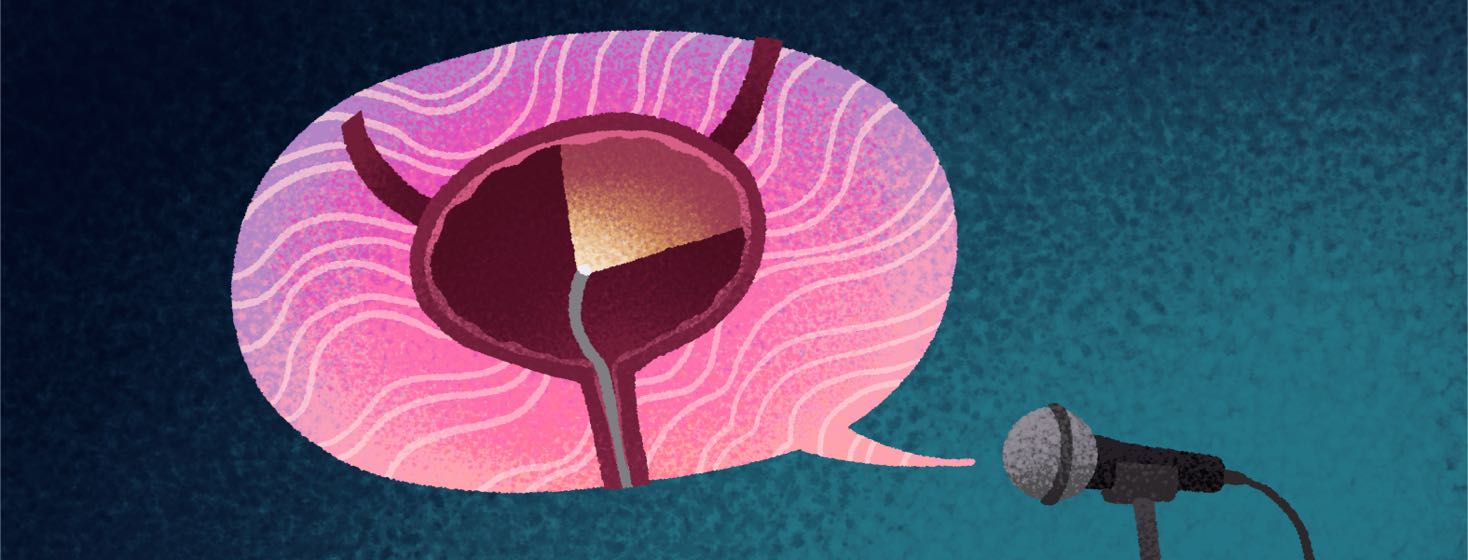Interview with Basil: Managing Scope Pain
We have talked extensively to the BladderCancer.net community about cystoscopies and managing the pain that sometimes comes along with it. Basil came to us with a new inquiry that we had not seen before - utilizing slippery elm supplements to help with natural lubrication and managing that dreaded scope pain.
Slippery elm, as the name suggests, may help in the production of mucous secretion. At the moment, there is no substantial scientific evidence to support the general use of slippery elm. So, like with any supplement or treatment, be sure to talk to your doctor before taking slippery elm.1
An abrupt diagnosis
What was your experience getting diagnosed with bladder cancer? What was your first sign that something wasn’t quite right? Can you tell us how you were diagnosed and what you felt during that time?
I passed a lot of bright red urine in a public restroom and knew that something wasn't right. I immediately when to an urgent care center, at which point they thought it was kidney stones, and sent me for an MRI. They also referred me to a urologist as well; he sent me for an MRI with dye contrast and a cystoscopy.
Surgery and uncomfortable follow-up
Can you share your experiences with the treatments and procedures you received? How did you and your doctor agree on a treatment plan?
It was pretty straightforward - cancer had to be removed from how my doctor explained it. Within 2 weeks I had a TURBT. They found a substantial tumor on the bladder wall and removed it. I had routine checkups done regularly. Fast forward two years late, suspicious spots were found and I had another surgery but this time the spots were benign.
Then I had more checkups, the last one was absolutely miserable. We had a different doctor came in and take a look. My family and I thought I was going to have to lose my bladder after COVID. But then I had surgery again, and the inflammations were identified as being benign again.
My most recent tests and scope showed my bladder was in great shape, so the doctor expanded my check-up gap to 6 months. At that point, I will get checked again with the necessary medication and the numbing jelly to make the scope tolerable for me.
Utilizing slippery elm
Can you share your experience doing research on ways to make a cystoscopy less painful?
My cystoscopy after COVID was horrible. Previously, it was uncomfortable but still tolerable. But then the scopes got worse and more unpleasant with each experience. It may be the injury done to my urethra.
Anyway, it is necessary if I want to keep bladder cancer away, so I talked to my doctor and made sure he was aware of my discomfort. Additionally, I did some research and found that it did not have to be this bad. The doctor prescribed Xanax, which helps; I was also given an opioid pain killer. My care team also took the step of applying lidocaine jelly 8 minutes before the scope is even put in, giving it a chance to numb and lubricate.
Anecdotal, managing scope pain
Slippery elm may or may not have helped, but the experience was far better than before. I would recommend trying different things to improve the experience if you have a bad one, do not suffer needlessly. The doctor does not want to cause pain, and the procedures are easier to complete when the patient is able to relax.
A word to the wise
What advice would you give to others newly diagnosed?
Do not put off the scopes and follow up, it is always best to talk to your doctor, as they are going to be best informed on what steps each individual should take.
The urethra is made for use as an exit, not an entrance. It is going to be uncomfortable, but there are a lot of options to help manage scope pain. Valium helps some people, but it is worthless for me. If you were prescribed it and had a bad experience, talk to your doctor and get something different. It is all about getting well. I hope everyone dealing with this is successful in getting rid of bladder cancer.

Join the conversation